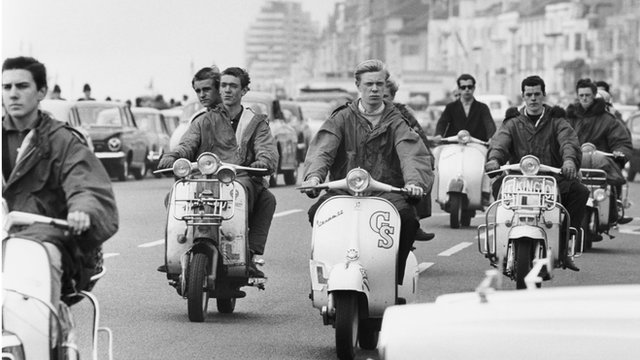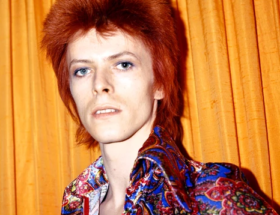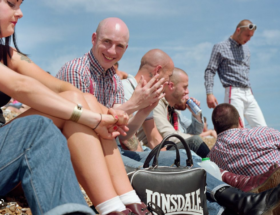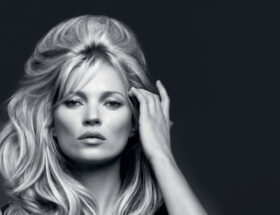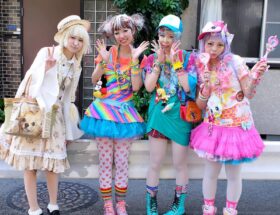In the 1960s and 1970s, the youth subcultures of Mods and Skinheads emerged in Britain. These subcultures were defined by their distinctive fashion styles, which became a visual expression of their beliefs, attitudes, and social identity. The Mod and Skinhead fashion movements were both influenced by the social and political changes of the time, as well as by the music and art scenes in London and other urban centers. In this essay, we will explore the fashions of these two subcultures and examine how they reflected the broader cultural trends of the era.
The Mods were a group of young people who embraced modernism and style. They were influenced by Italian fashion and took pride in their well-tailored suits, slim-fitting trousers, and neat haircuts. The Mods were also known for their love of scooters, which they rode to meet with other Mods and attend concerts and parties. Their look was sleek and sophisticated, with a focus on clean lines and minimalism. The Mod fashion movement was heavily influenced by the music of the time, particularly jazz and R&B. The clothing worn by the Mods reflected their love of music, with many sporting images of their favorite musicians on their clothing.
One of the most iconic pieces of Mod fashion was the Parka, a hooded jacket designed to protect scooter riders from the rain. The Parka was typically made from a heavy-duty cotton material, with a fur-trimmed hood and large pockets. It was often worn with slim-fitting trousers, a button-down shirt, and a pair of loafers or brogues. Another key piece of Mod fashion was the Harrington jacket, a lightweight jacket made from cotton or nylon. The Harrington was worn with a button-down shirt and slim-fitting trousers, and was often accessorized with a silk scarf or a pair of sunglasses. The Mod look was completed with a pair of polished shoes, typically either brogues or loafers.
The Skinheads were a working-class subculture that emerged in the late 1960s. They were known for their short haircuts, braces, and Doc Martens boots. The Skinhead style was heavily influenced by the fashion of the Mod movement, but with a tougher, more aggressive edge. Skinheads often wore tight-fitting jeans or Sta-Prest trousers, along with button-down shirts, Fred Perry polo shirts, and bomber jackets. They were also known for wearing suspenders, which were often worn over a white t-shirt. The Skinhead look was completed with a pair of Doc Martens boots, which were originally designed for workers in heavy industry but were adopted by the subculture as a symbol of working-class pride.
The Skinhead fashion movement was also influenced by the music of the time, particularly reggae and ska. Skinheads were known for their love of dancing, and their clothing was designed to allow them to move freely on the dance floor. They often wore clothing made from natural materials such as denim and cotton, which allowed them to move comfortably and sweat freely. Many Skinheads also sported badges or patches on their clothing, which expressed their political and social beliefs. These patches often featured slogans such as “Support Your Local Skinhead” or “Anti-Racist Action”.
Both the Mod and Skinhead fashion movements were characterized by a sense of rebellion and individuality. The clothing worn by these subcultures was often a reflection of their social and political beliefs. Mods embraced modernism and sophistication, while Skinheads embraced working-class pride and a tough, aggressive look. Both subcultures were influenced by the music of the time, which played a significant role in shaping their fashion sense.
In conclusion, the fashions of the Mods and Skinheads in 1960s and 1970s Britain were emblematic of the broader cultural trends of the era. These subcultures emerged in response to the social and political changes of the time and represented a rejection of mainstream values and ideals. The fashion styles of the Mods and Skinheads were a means of expressing their identity, as well as a way of differentiating themselves from the mainstream.
The fashion of these subcultures also had an impact on the broader fashion industry. The Mod and Skinhead movements influenced designers and fashion houses, who incorporated elements of their styles into their own collections. The Parka, for example, became a popular item of clothing in the mainstream market, and the Harrington jacket was worn by celebrities such as Steve McQueen and Elvis Presley.
However, the fashion of these subcultures was not without controversy. The Skinhead movement in particular was associated with racism and far-right politics, and the clothing worn by Skinheads often included symbols and slogans associated with these beliefs. This led to a negative perception of the subculture, and many people viewed Skinheads as a threat to social order.
Despite this, the fashion of the Mods and Skinheads remains an important part of British cultural history. The distinctive styles of these subcultures continue to inspire designers and fashion enthusiasts to this day. The influence of these subcultures can be seen in the clothing worn by musicians, actors, and other cultural figures, and the legacy of their fashion continues to resonate with people around the world.
In conclusion, the fashion of the Mods and Skinheads in 1960s and 1970s Britain reflected the broader cultural trends of the era. These subcultures emerged in response to the social and political changes of the time and represented a rejection of mainstream values and ideals. The fashion of these subcultures was a means of expressing their identity and a way of differentiating themselves from the mainstream. The fashion of the Mods and Skinheads had a significant impact on the broader fashion industry and continues to inspire designers and fashion enthusiasts to this day.
